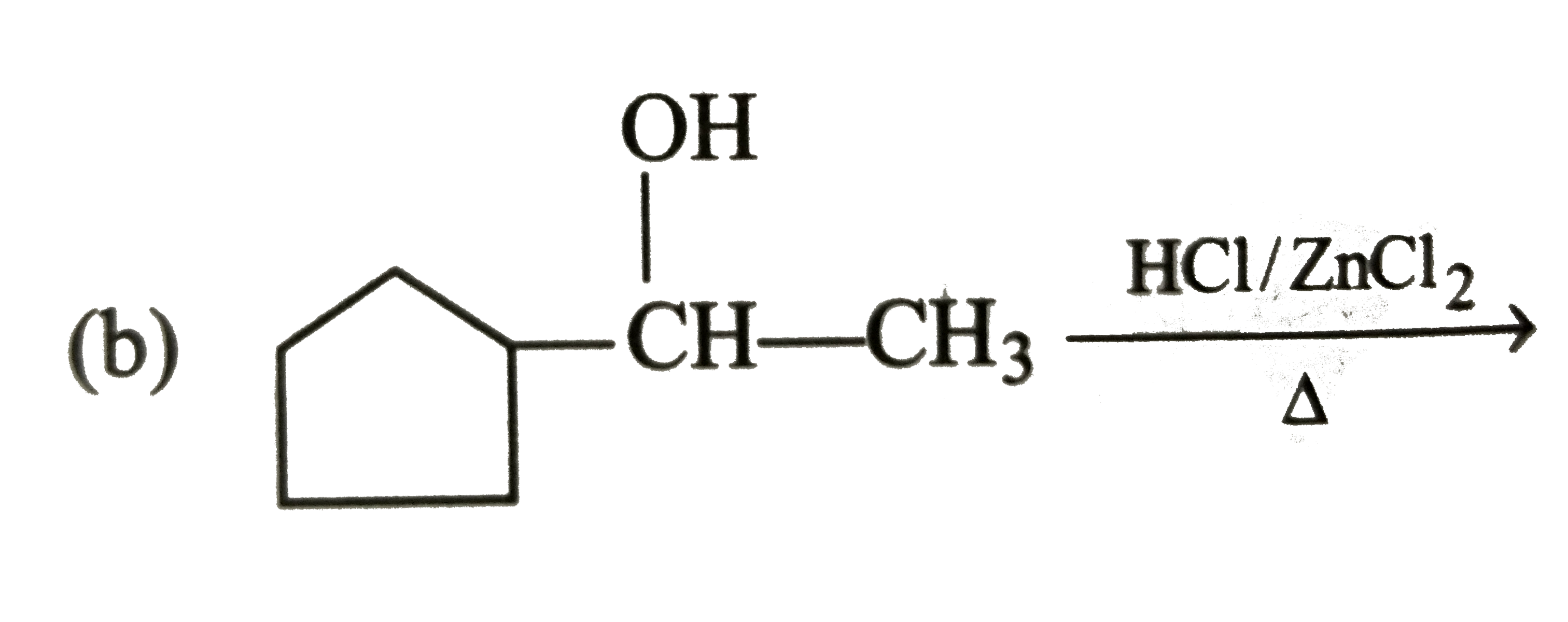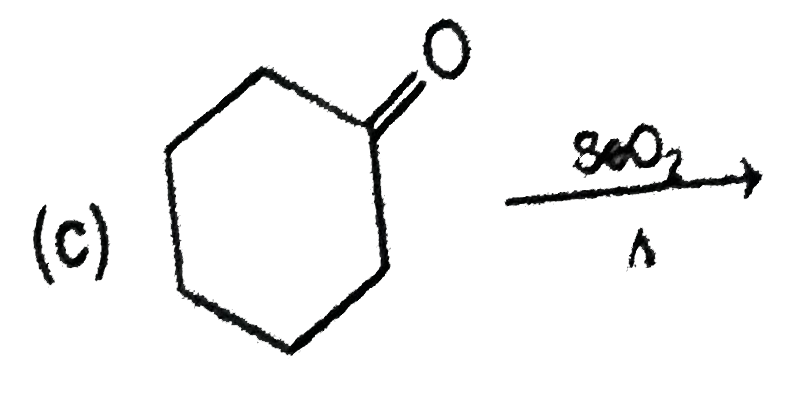CH3−O∣∣C−CH3+NaOHI2−−→Δ(A). A will be
CH3OH
CHI3
CH3CI3
CH3CH2CI3
The correct Answer is:B
To solve the given reaction, we need to analyze the reaction of acetone with sodium hydroxide (NaOH) in the presence of iodine (I2) under heat. The process involves the formation of an intermediate and subsequent substitution reactions. Here’s a step-by-step breakdown:
Step 1: Identify the Reactants
The reactant given is acetone, which has the structure CH3COCH3. We are reacting it with NaOH and I2.
Step 2: Deprotonation
When acetone reacts with NaOH, the hydroxide ion (OH-) abstracts a proton (H+) from one of the methyl groups adjacent to the carbonyl group. This results in the formation of an enolate ion:
CH3COCH3+NaOH→CH3COCH−2+Na++H2O
Step 3: Resonance Stabilization
The enolate ion (CH3COCH2-) is resonance stabilized. The negative charge can be delocalized between the carbonyl oxygen and the carbon atom adjacent to it, which enhances the stability of the enolate.
Step 4: Iodination
The enolate ion (CH3COCH2-) can now attack iodine (I2). The nucleophilic carbon (with the negative charge) attacks one of the iodine atoms, leading to the formation of an iodo compound:
CH3COCH−2+I2→CH3COCH2I+I−
Step 5: Further Iodination
If there is excess iodine and NaOH, the process can repeat. The remaining hydrogen on the carbon adjacent to the carbonyl can be abstracted again, leading to another enolate formation, which can then react with another iodine molecule:
CH3COCH2I+NaOH+I2→CH3COCHI2+Na++H2O
Final Product
The final product (A) of the reaction is:
CH3COCHI2
Summary of the Reaction
The overall reaction can be summarized as:
CH3COCH3+NaOH+I2Δ−→CH3COCHI2
The reactant given is acetone, which has the structure CH3COCH3. We are reacting it with NaOH and I2.
When acetone reacts with NaOH, the hydroxide ion (OH-) abstracts a proton (H+) from one of the methyl groups adjacent to the carbonyl group. This results in the formation of an enolate ion:
CH3COCH3+NaOH→CH3COCH−2+Na++H2O
The enolate ion (CH3COCH2-) is resonance stabilized. The negative charge can be delocalized between the carbonyl oxygen and the carbon atom adjacent to it, which enhances the stability of the enolate.
The enolate ion (CH3COCH2-) can now attack iodine (I2). The nucleophilic carbon (with the negative charge) attacks one of the iodine atoms, leading to the formation of an iodo compound:
CH3COCH−2+I2→CH3COCH2I+I−
If there is excess iodine and NaOH, the process can repeat. The remaining hydrogen on the carbon adjacent to the carbonyl can be abstracted again, leading to another enolate formation, which can then react with another iodine molecule:
CH3COCH2I+NaOH+I2→CH3COCHI2+Na++H2O
The final product (A) of the reaction is:
CH3COCHI2
The overall reaction can be summarized as:
CH3COCH3+NaOH+I2Δ−→CH3COCHI2
Topper's Solved these Questions
- BOOK - NARAYNACHAPTER - HALOALKANE AND HALOARENESEXERCISE - EVALUATE YOURSELF - 16videos
HALOALKANE AND HALOARENES
- BOOK - NARAYNACHAPTER - HALOALKANE AND HALOARENESEXERCISE - EVALUATE YOURSELF - 25videos
HALOALKANE AND HALOARENES
- BOOK - NARAYNACHAPTER - F-BLOCK ELEMENTSEXERCISE - CHECK YOUR GRASP2videos
F-BLOCK ELEMENTS
- BOOK - NARAYNACHAPTER - HALOGEN COMPOUNDSEXERCISE - Passage 131videos
HALOGEN COMPOUNDS
Similar Questions
Knowledge Check
- Question 1 - Select One
CH3−C∣BrH−CH2−O∣∣C−CH3N2H4,ӨOH−−−−−→Δ product :
A B
B C
C D
D
- Question 2 - Select One
CH3−O∣∣C−CH3 and CH3−O∣∣C−H is differentiated by:
AiodoformBNaHSO3C2,4-DNPDnon of these - Question 3 - Select One
In the given reaction CH3−CH2−Br∣CH−CH=CH2Alc.KOH/Δ−−−−−−−−→(X) X will be
ACH3−CH2−CH=C=CH2BCH2=CH−CH2−CH=CH2CCH3−CH=CH−CH=CH2DCH3−CH2−CH2−C≡CH
Explain and complete the following reactions :
CH3−CH2−CH3∣C∣CH3−CH2OHHCl/ZnCl2−−−−−−−−−→Δ (b) View Solution
View SolutionMatch the Column-I with Column-II.
Column-IColumn-II(a)CH3−O∣∣C−NH2KoH+Br2−−−−−−→(p)CH3N=C=O(b)CH3−O∣∣C−OH−NH3−−→(q)CH3−O∣∣C−NHBr(c)CH3−O∣∣C−OHNH3−−→Δ(r)CH3−O∣∣C−ΘON⊕H4(d)CH3−O∣∣C−Cl(i)NaN3/Δ−−−−−−−−→(ii)H3O⊕(s)CH3NH2View SolutionCH2CH2CH2−O∣∣C−OHΔ−−→ALAH−−→B∣NH2
View SolutionComplete the following reaction sequence
CH3−O∣∣C−CH3(i)CH3MgBr−−−−−−−−→(ii)H2O(A)Na metal −−−−−→Ether (B)CH3−Br−−−−−→(C)View SolutionIn the reaction sequence
CH3−O∣∣C−H−HCN−−−→.ΘOH(A)H2O/⊕H−−−−→Δ Product is/are :View Solution




